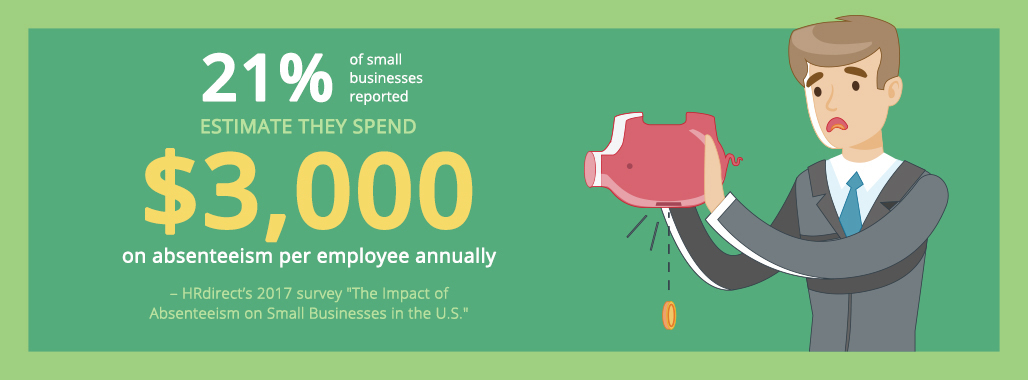One of your employees has called out “sick” for the second time in two weeks — and you’re concerned he’ll repeat the behavior.
In most businesses, it’s not uncommon for employees to call out unexpectedly. But, excessive absences on short notice can create problems for your business — reducing productivity and increasing your stress. What can you do to keep the situation under control?

- Lower morale due to increased workloads
- Frustrated managers and supervisors
- Loss of productivity and missed deadlines
- Reduction of services
- Negative word-of-mouth by unhappy customers
- Decreased product quality
- Increased risk for on-the-job injury due to fatigue
- Employee turnover
Attendance Patterns You Can’t Afford to Overlook
Absenteeism not only effects employee productivity but also team performance, which impacts the overall success of your business. A SHRM survey determined that supervisors spent 4.2 hours a week managing absences and were 15.7% less productive because of it. At the same time, employees were 29.5% less productive when covering for unplanned absences.
Consistent tracking is the first step toward identifying unexcused absences and reducing the administrative drain on your business. Tracking attendance also can serve as a resource when verifying attendance with an employee. Having a fair and simple system is the easiest way to stay on top of attendance without losing focus of other priorities.
Reducing Employee Absenteeism
Tracking employee attendance is one thing, but what can you do to break the cycle of tardy or absent employees?
- Have a formal, written attendance policy in place. Clearly explain your company’s leave policy or PTO program, including standard work hours, holidays, your call-out procedure and the consequences of tardiness or unexcused absences. Review the policy in detail with employees and keep signed and dated copies in their personnel files.
- Find out what is causing the problem and whether it’s an internal or external issue (and if it’s affecting several employees or one). Determine who is being affected and the reasons for the problem. An employee could be experiencing stress, sexual harassment or bullying in the workplace. Find out if an employee is dealing with a situation outside of work that is contributing to their absence. Be careful not to probe and cross legal boundaries with your questioning, but be open to the possibility.
- Create an environment that is flexible and appealing to employees. Allow employees the necessary time off. If policies are too restrictive, employees will be more likely to abuse it. Make sure employees feel included. If they don’t feel accepted, they won’t want to be there. Implement a wellness program to encourage healthy lifestyles, such as providing gym reimbursement or healthy snacks in the break room.
Consider these simple steps:
Why Employee Attendance Matters
Absenteeism in the workplace has become a growing problem affecting productivity and overall morale. Using an absence tracking app helps you track attendance with easy, online access, while also giving you more control over potentially damaging absences such as being short staffed during a critical deadline or busy holiday season.
- Establish a formal attendance policy to set expectations for employees.
- Determine what could be contributing to absences to help solve attendance problems.
- Implement a system to pinpoint absences that would otherwise go undetected.


